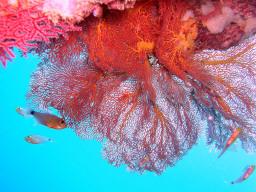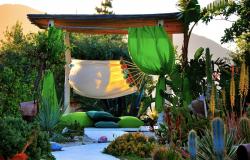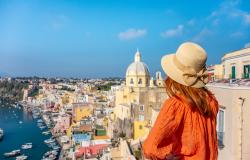Italian forestry police sounded the alarm Monday over the growing national market for the illegal trafficking of coral.
Italians are snapping up the colourful species - most of which has been pilfered from reefs in Indonesia - to brighten up home aquariums, according to the animal trade investigation bureau chief, Ivan Severoni.
Between December and January, the bureau seized well over two tonnes of live coral and 'live' rock - or reef substrate - as traffickers tried to smuggle it into the country.
''We're talking about a huge market - collectors will pay up to 4,000 euros for coral measuring 10 cm,'' said Severoni. ''But the point is that the coral then dies after just a few months.''
The trade of around 2,000 coral species is regulated by the Convention on International Trade in Endangered Species of Wild Fauna and Flora (CITES), and it is illegal to bring any of these species into Italy without a CITES permit.
Severoni added that the explosion of growth in the illegal coral trade is probably due to the possible future closure of the legal market for the species.
''It seems that the traders have gone over the top in terms of stocking up,'' he said.
In addition to coral, caviar - for which there is a flourishing black market - and reptiles are high on the list of the bureau's major concerns, with tortoises the most frequently seized animal.
''In 2006, out of 60,000 checks that we made, around 65% regarded reptiles, and half of these were tortoises,'' said bureau vice-inspector Marco Mei.
A wild tortoise can fetch up to 2,000 euros, and the market remains stable because tortoises are easier to look after than a cat or a dog, Mei explained.
In September police seized two caimans, 21 monitor lizards, 40 giant scorpions, two boa constrictors, an albino python, around 20 tortoises and a dozen poisonous spiders during one animal trafficking bust.
Some 35,000 animals are brought to Italy each year, among them toucans, parrots, iguanas, crocodiles, small monkeys, and spiders. Environmental groups claim one of every three are smuggled into the country,
The trade generates profits of 500 million dollars a year, according to their estimates.
Criminal groups involved in the smuggling of animals often have mafia connections, and many mobsters have been fond of keeping exotic animals themselves.
Raffaele Brancaccio, a bigwig of the Naples Camorra mafia, used to have his own private zoo in the city where he kept monkeys, snakes and parrots.
His most ferocious pet was Simba, a 160 kg lion whose roars woke up the inhabitants of the neighbourhood during the night.
Simba was entrusted to Naples Zoo when he was discovered.
Another Naples boss used to take to the streets with a 130 cm python wrapped round his neck, and another kept a leopard in his garage.
Although legal trade in animals and plants is regulated by CITES, an estimated one-third of the global sales of 25 billion dollars a year is illegal.
As a branch of organised crime, global turnover is reportedly equal to that of prostitution, and is surpassed only by arms and drugs trafficking.
















